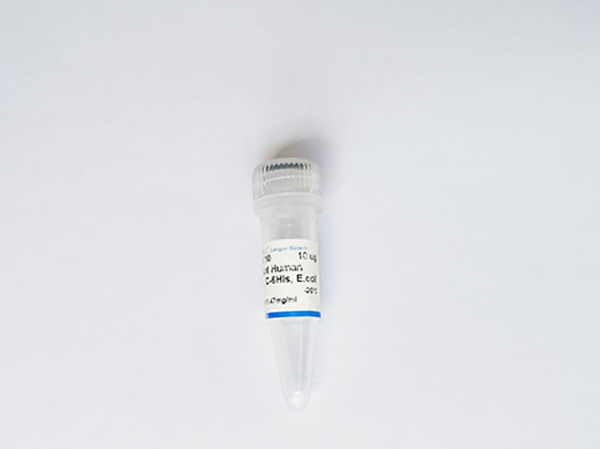概述
Recombinant Schistosoma Japonicum Glutathione S-transferase Class-mu 26 kDa Isozyme is produced by our E.coli expression system and the target gene encoding Met1-Lys218 is expressed.
使用说明
This material is offered by Sangon Biotech for research, laboratory or further evaluation purposes. NOT FOR HUMAN USE.
技术规格
| Tag | None |
| 种属 | Schistosoma Japonicum |
| 表达系统 | E.coli |
| Accession# | P08515 |
| Source | E.coli |
| Formulation_Description | Lyophilized from a 0.2 μm filtered solution of PBS, pH 7.4. |
| Storage | Lyophilized protein should be stored at < -20°C, though stable at room temperature for 3 weeks.Reconstituted protein solution can be stored at 4-7°C for 2-7 days.Aliquots of reconstituted samples are stable at < -20°C for 3 months. |
| Reconstitution | Dissolve the lyophilized protein in distilled water. |
| Purity | Greater than 95% as determined by reducing SDS-PAGE. |
| Endotoxin | Less than 0.1 ng/μg (1 EU/μg) as determined by LAL test. |
| Background | Glutathione S-transferases (GSTs), previously known as ligandins, comprise a family of eukaryotic and prokaryotic phase II metabolic isozymes best known for their ability to catalyze the conjugation of the reduced form of glutathione (GSH) to xenobiotic substrates for the purpose of detoxification. The GST family consists of three superfamilies: the cytosolic, mitochondrial, and microsomal (MAPEG) proteins. GST isoenzymes appear to play a central role in the parasite detoxification system. Other functions are also suspected including a role in increasing the solubility of haematin in the parasite gut. The activity of GSTs is dependent upon a steady supply of GSH from the synthetic enzymes gamma-glutamylcysteine synthetase and glutathione synthetase, as well as the action of specific transporters to remove conjugates of GSH from the cell. The primary role of GSTs is to detoxify xenobiotics by catalyzing the nucleophilic attack by GSH on electrophilic carbon, sulfur, or nitrogen atoms of said nonpolar xenobiotic substrates, thereby preventing their interaction with crucial cellular proteins and nucleic acids. |











 党沛
党沛 





